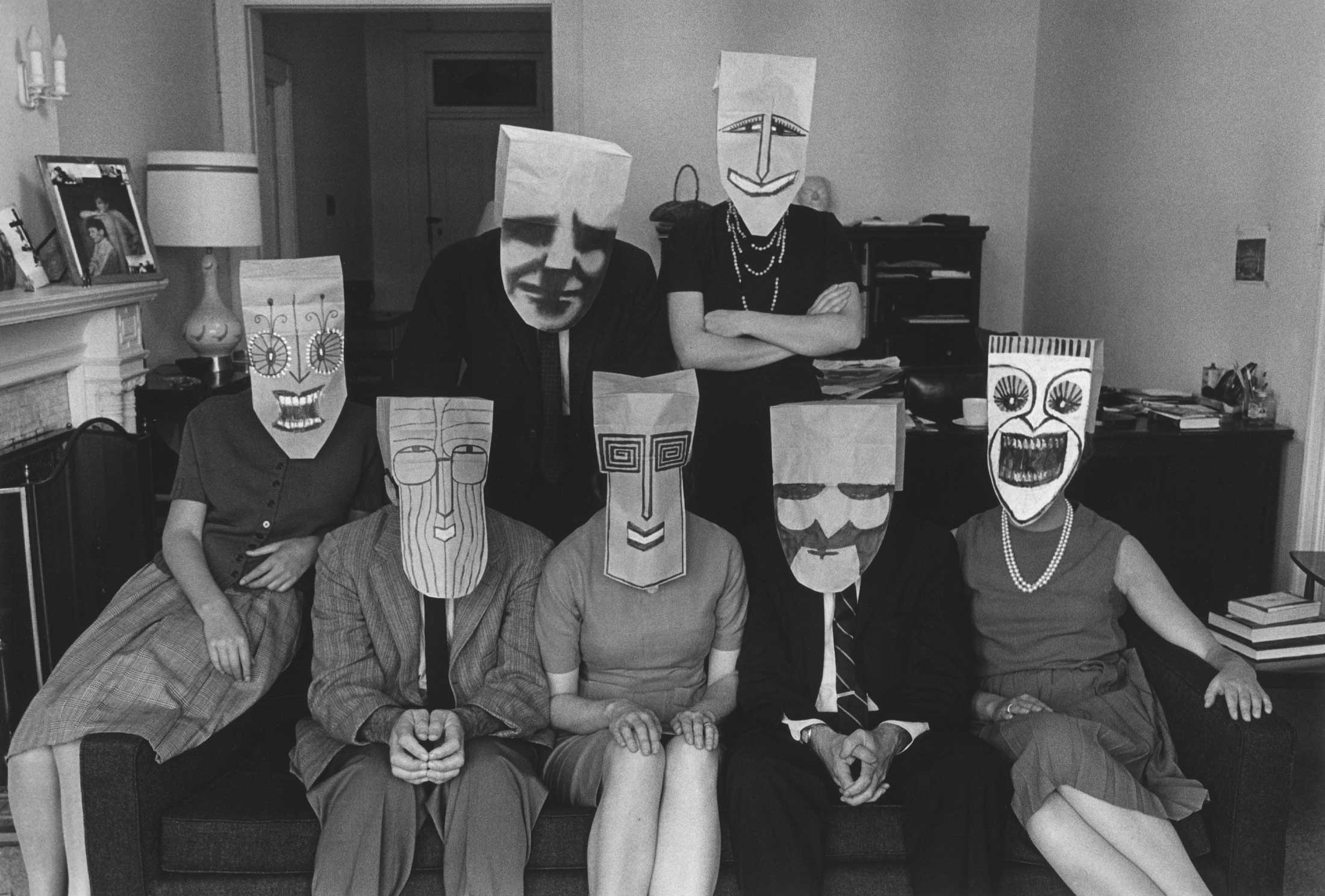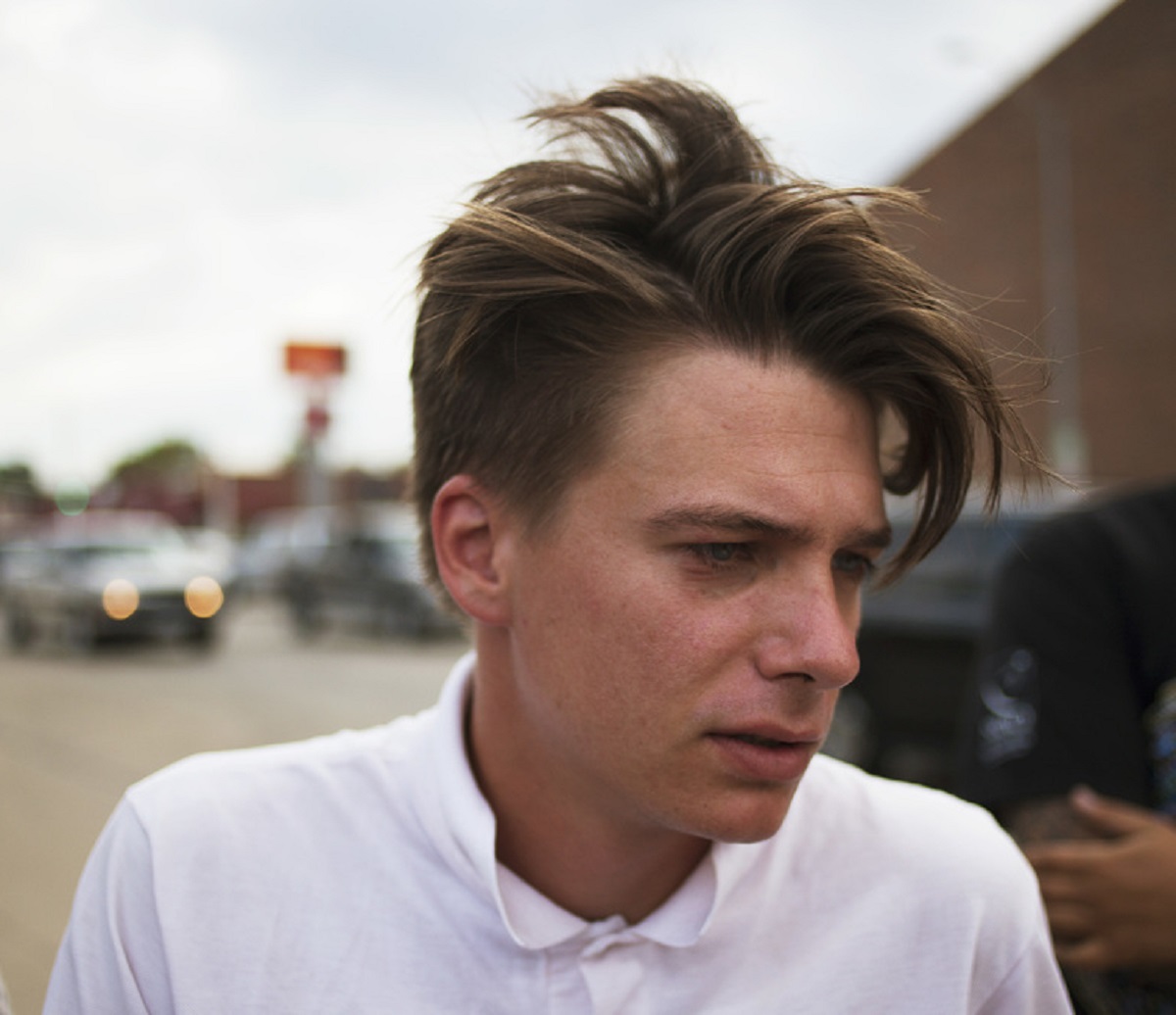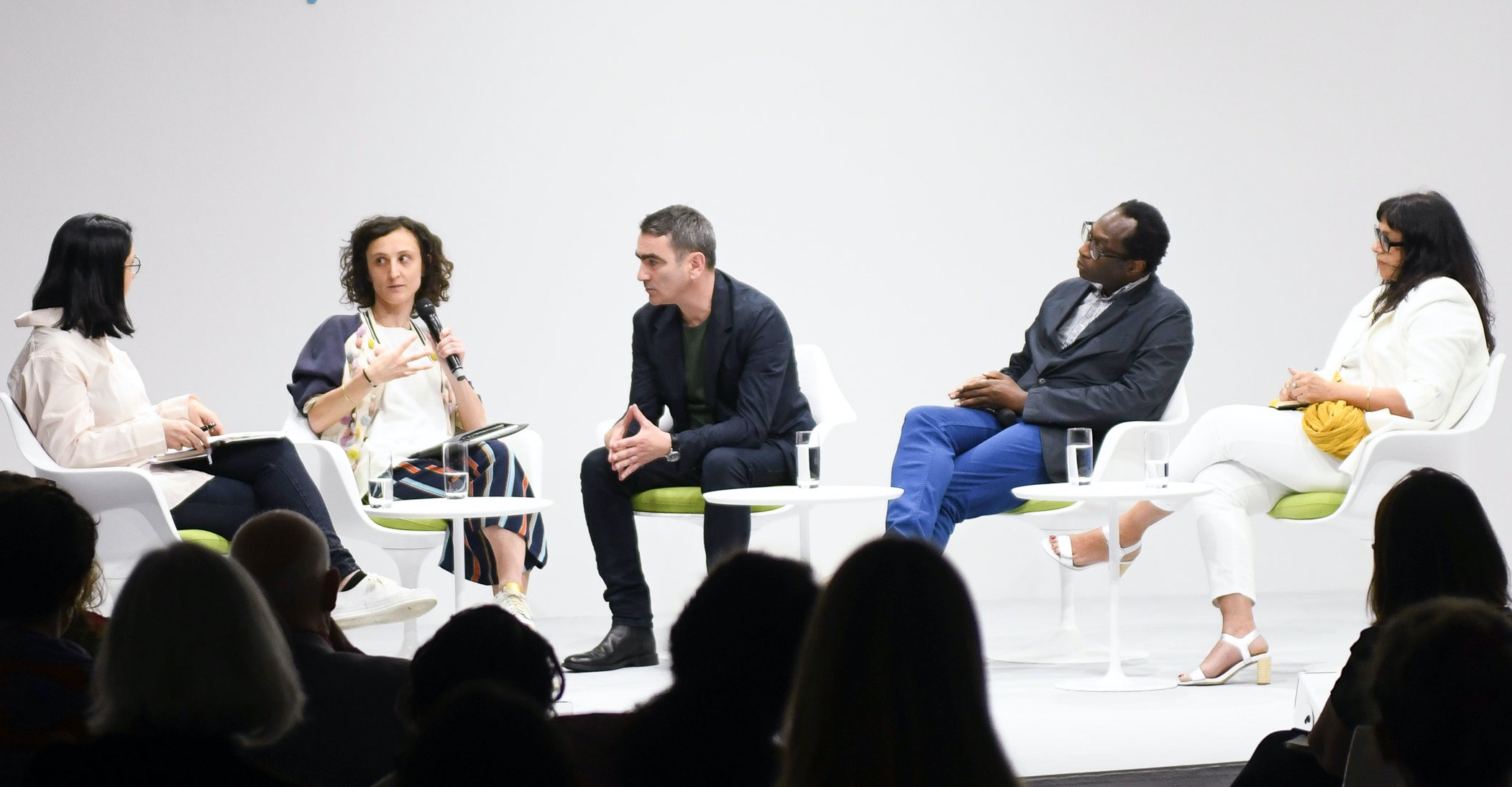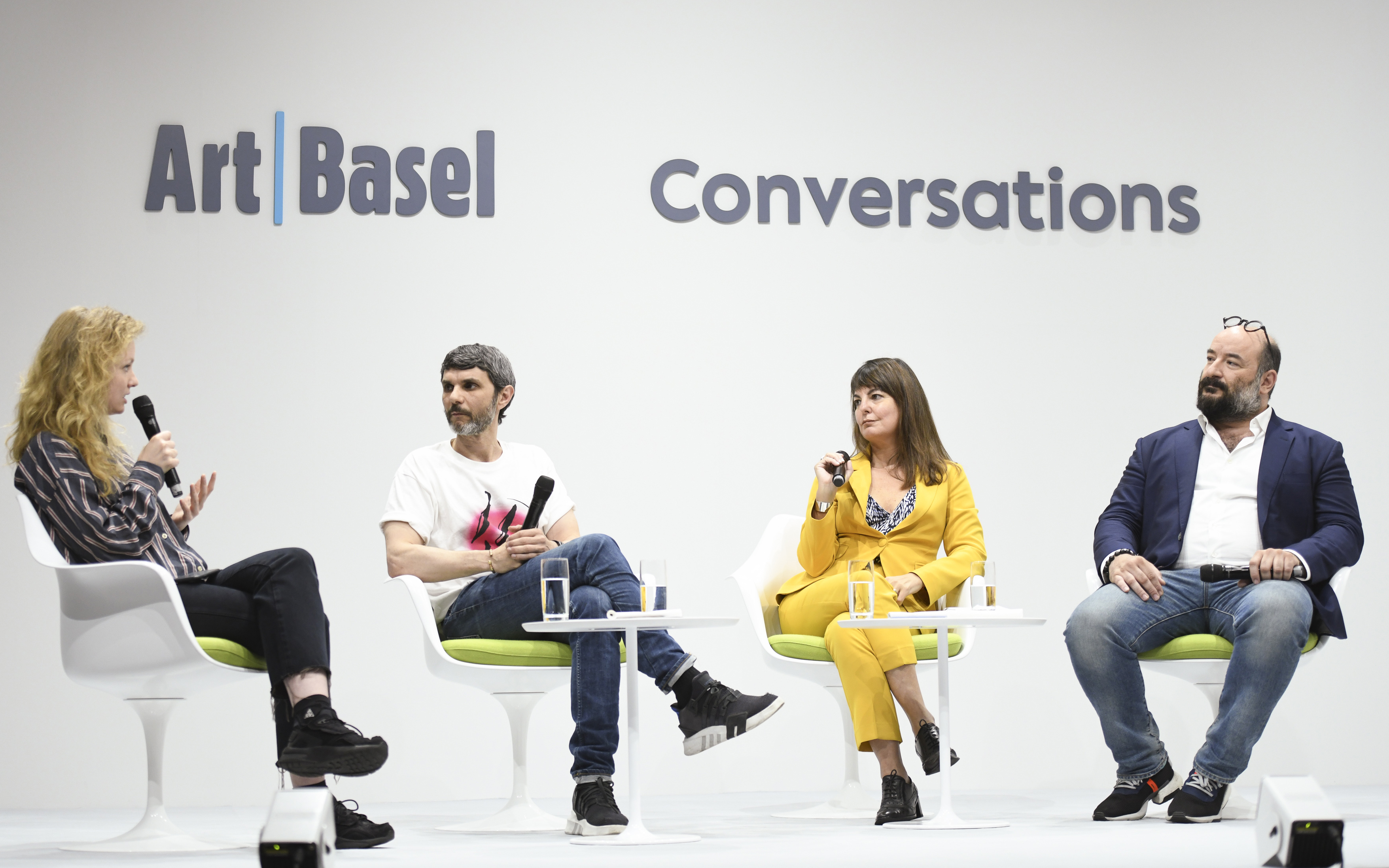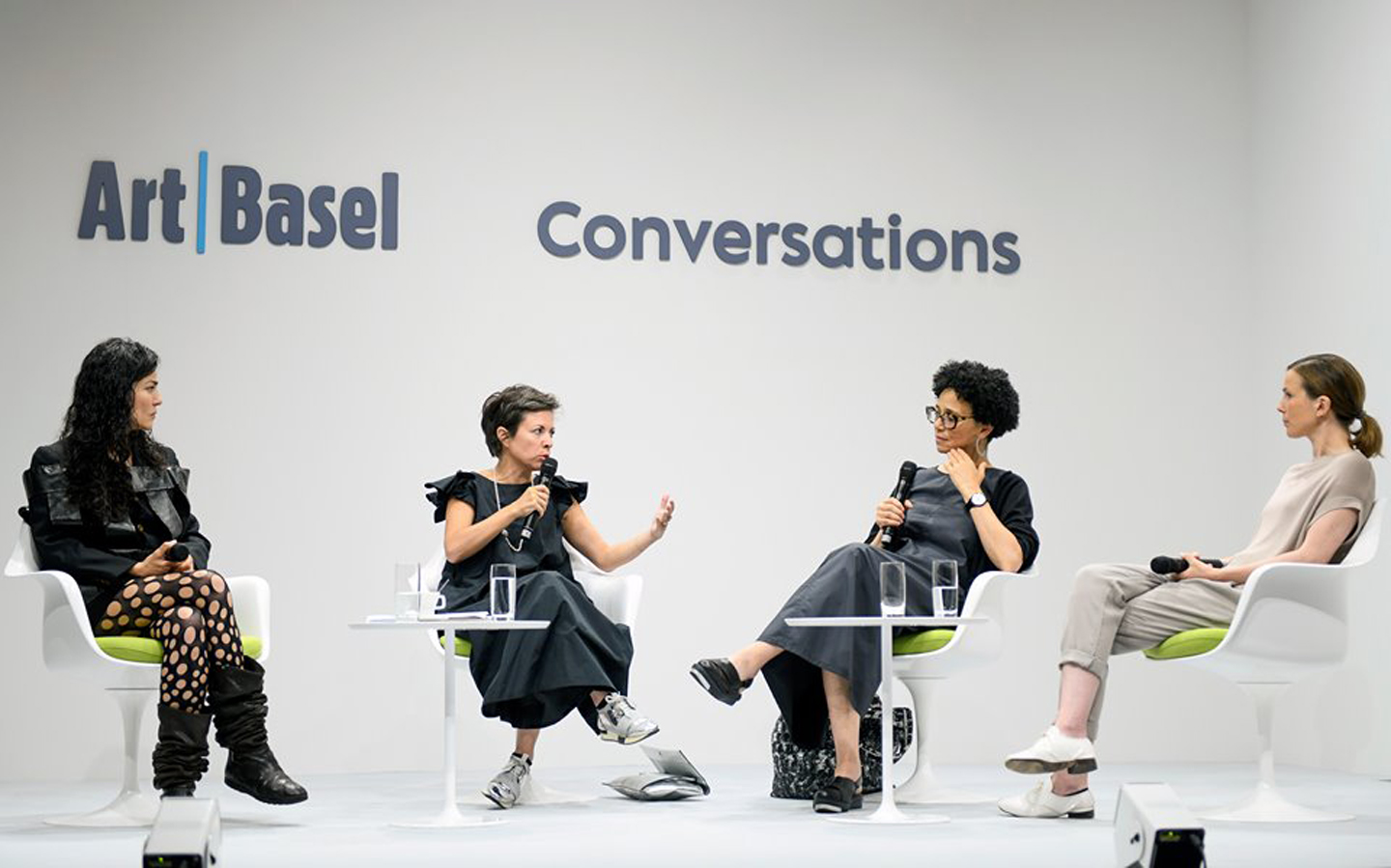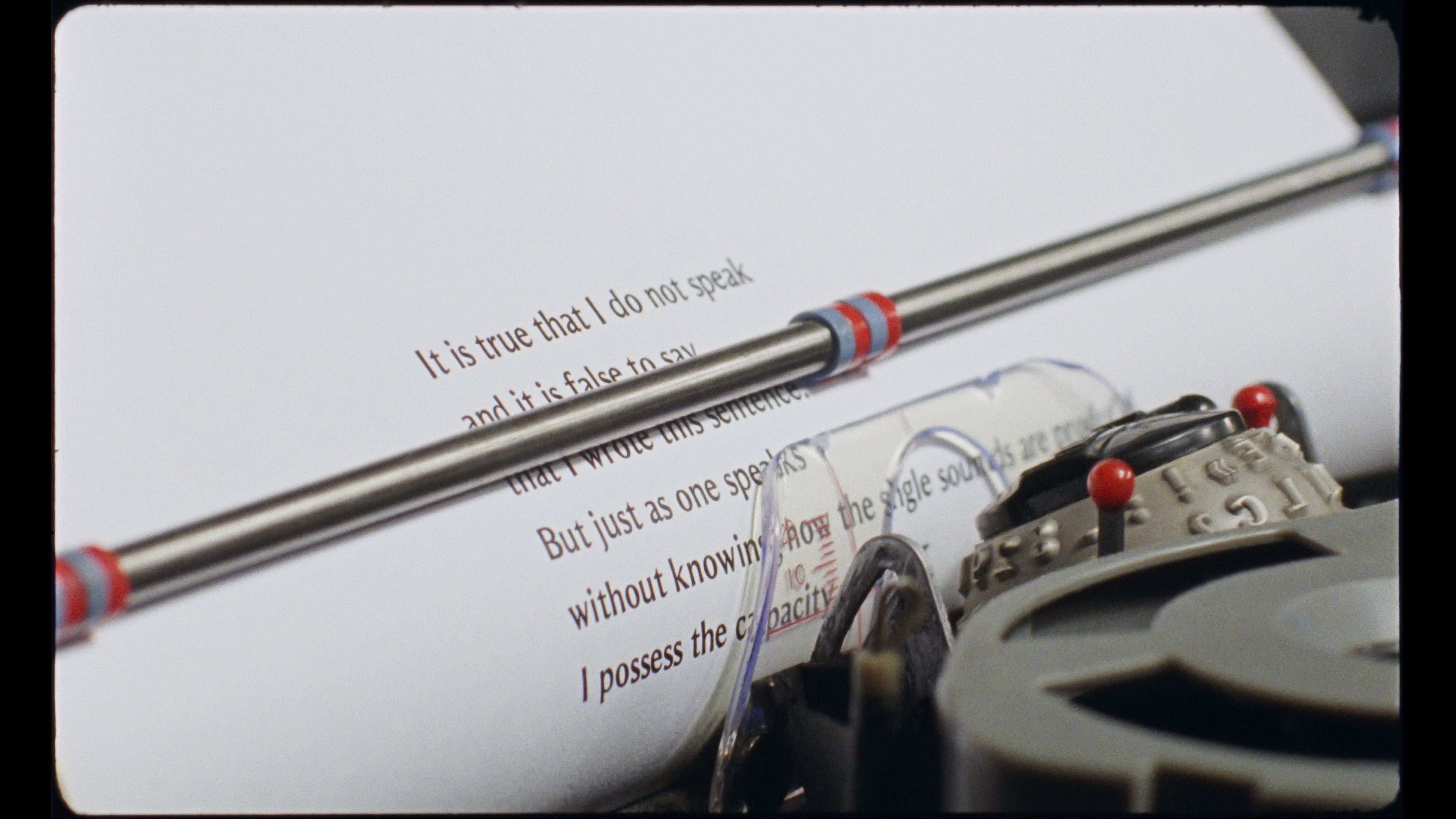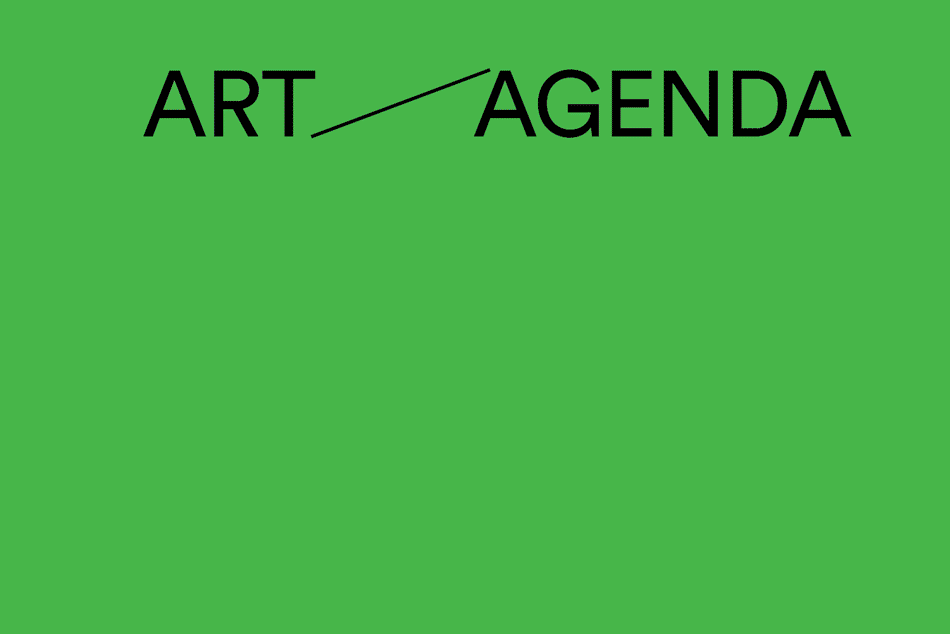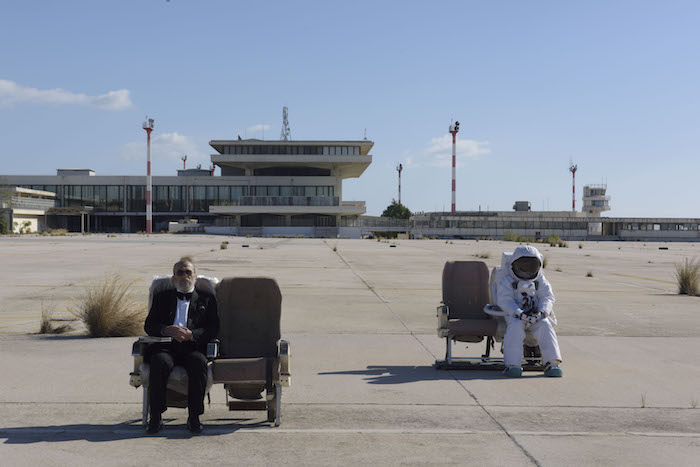art-agenda
Spring Round up
An empty white cube filled with water, track lighting still defiantly, even precariously, aglow. In 1976 Fabio Sargentini, the force behind L’Attico gallery in Rome, flooded his exhibition space on Via Beccaria. This action signaled a dramatic end to his program of hosting some of the most progressive and dynamic performance and art events in Europe from the late 1960s to mid-1970s by the likes of Trisha Brown, Simone Forti, Jannis Kounellis, Pino Pascali, and Robert Smithson. In his feature “The Gallerist: Fabio Sargentini of L’Attico, Rome,” art historian and writer Luca Cerizza delves into Sargentini’s multivalent career, and examines how he treated the gallery as a site that could flexibly accommodate and respond to the changes happening in the artistic practice and exhibition strategies of the day.
Reading about Sargentini might evoke a bit of nostalgia for a more flexible and open time, when galleries were not as beholden to the global art market as they are today. At the moment, the question rather seems to be about whether the commercial gallery is still a productive space for the display and sale of contemporary art, or if it has been eclipsed by the art fair, both in terms of experimental practice and pure economic potential.
Last month, art-agenda reviewed two very different new fairs, and considered their ability to infuse energy into a staid (or non-existent) contemporary art scene. On one end of the spectrum, Filipa Ramos checked out the second iteration of miart, writing that in the city’s attempts to brush up its “identity as a center for artistic production” the fair has already “been playing an essential role in this reinvention.” Across the pond, Andrew Stefan Weiner attended the first-ever Silicon Valley Contemporary, a perplexing affair that is trying to tap into a collector base for contemporary art that doesn’t really exist in the area. This led to, among other things, “a certain clumsiness in the event’s PR, such that its messaging seemed to waver between salesmanship and education or outreach.”
Such undertakings aren’t the only events that are looking more and more like art fairs. In Berlin, Astrid Mania considered the goings on during Gallery Weekend Berlin, which is celebrating its tenth anniversary. It was such a triumph that many attendees were forced to retroactively conclude that the city actually does have a successful art fair—it’s just spread all over the city instead of housed in a convention center full of booths or a fancy bespoke tent.
Recently on art-agenda:
Runo Lagomarsino’s “Against My Ruins” at Nils Stærk, Copenhagen
April 22–May 17, 2014
In writing on Runo Lagomarsino’s layered solo presentation at Nils Stærk, Sophie Goltz resists the temptation of a biographical reading, arguing that the artist’s background is rather “intellectually and ironically performed in almost all of the works” on view.
Frieze New York, New York
May 9–12, 2014
The third iteration of the London-transplant art fair was a treasure trove of discoveries, proclaimed Ginny Kollak. It’s a fair that actually lets the work stand out, where, amazingly, “all of the extras (the Talks, food stands, freebie magazines, marginally comfortable sitting areas, and even the ancillary Frieze Projects artists’ commissions) seemed to recede into the background.”
Pauline Boudry/Renate Lorenz’s “Journal Notes from Backstage” at Marcelle Alix, Paris
March 23–May 17, 2014
Mara Hoberman visits this multi-format exhibition by artist duo Boudry and Lorenz, which displays “extensive research of various subcultures historically deemed ‘deviant’ by hetero-normative cultures,” and offers “an alternative utopian environment wherein improvisation, self-invention, and egalitarianism are the norm.”
Gallery Weekend Berlin
May 2–4, 2014
Astrid Mania writes that the 50-plus exhibition openings of the tenth anniversary of Gallery Weekend Berlin “certainly had a strong, back-to-the-roots feeling,” making the case that in Berlin, “it is still the dealers that dig out the treasures of recent art history and stage positions that you don’t see (enough of) in public institutions.”
The Gallerist: Fabio Sargentini of L’Attico, Rome
May 2, 2014
In this special feature, new contributor Luca Cerizza looks at art and exhibition histories through the life and work of an exceptional gallerist. Here, he details Fabio Sargentini’s contributions to performance, time-based, and Conceptual art in the European gallery scene of the ’60s and ’70s through his directorship of L’Attico in Rome.
Marine Hugonnier’s “The Bee, the Parrot and the Jaguar” at Galeria Fortes Vilaça, São Paulo
March 22–May 3, 2014
This solo show from London-based Marine Hugonnier incorporates the writings of Brazilian anthropologist Eduardo Viveiros de Castro, speaking to an “ethnographic revival in artistic practices.” “The insurmountable distance between things, people, animals, and places is also at the heart of this ambitious exhibition,” reports Filipa Ramos, “which presents a very delicate balance between theoretical concerns, abstract reifications, and research on popular sources of imaginary.”
“The Un-Officials | Art Before 85″ at Boers-Li Gallery, Beijing
March 1–April 12, 2014
Rejecting the state-sanctioned Socialist Realism of post-Reform China, the artists included in this exhibition “instead [taught] themselves how to paint in banned western styles while attempting to dodge government surveillance.” Though the works here are “aesthetically uneven in quality, and, by definition, pastiche,” writes Karen Archey, they provide important historical insight into a time in Chinese art when “art meant everything, and the market nothing.”
Teresa Margolles’s “El Testigo” at Centro de Arte Dos de Mayo (CA2M), Madrid
February 18–May 25, 2014
Dealing with “the aftermath of ten years of living with conflict, violence, and crime in the pathological borderland of Mexico’s Ciudad Juárez,” this solo exhibition of Mexican artist Teresa Margolles proves to be a “remarkable demonstration of heightened political sensibility among today’s socially engaged artists.” Octavio Zaya finds the exhibition to be “one of the strongest” in Spain this season.
Terence Gower’s “Baghdad Case Study” at LABOR, Mexico City
March 23–May 24, 2014
Canadian artist Terence Gower’s exhibition presents documents pertaining to Baghdad’s two U.S. Embassies in order to consider how media is used “to coerce and co-opt various citizenries.” Adam Kleinman visits, warning “while the aesthetics of politics are something to be watched, to consider politics as an aesthetic alone is just a form of misrepresentation.”
Heman Chong’s “Of Indeterminate Time Or Occurrence” at FOST Gallery, Singapore
March 8–May 4, 2014
Featuring a selection of narrative and text-based works, Heman Chong’s most recent solo show consists of “a handsome presentation of paintings, text pieces, and a found book.” Michael Lee favors the works “couched in mystery and confusion”—”[r]ather than showing or telling,” he writes, “they point, leaving viewers to follow clues.”
Martin Kippenberger’s “The Raft of the Medusa” at Skarstedt, New York
March 3–April 26, 2014
Martin Kippenberger’s final series of self-portraits, consisting of over a dozen each of paintings, drawings, and lithographs, as well as an eight-by-fifteen-foot rug, are reunited here for its first New York exhibition, prompting Chris Reitz to reconsider the work in light of “such a straightforward exhibition of Kippenberger’s final self-fashioning in the sober surroundings of an East Side blue chip gallery.”
Silicon Valley Contemporary at San Jose McEnery Convention Center, San Jose
April 10–13, 2014
“While San Francisco has its share of serious collectors,” notes Andrew Stefan Weiner “local consensus has long been that the tech industry is largely indifferent to high culture.” In his review of Silicon Valley Contemporary’s inaugural edition, he finds that the area’s first-ever art fair “existed in isolation from the messier realities that would have lent it relevance, or at least guaranteed a more reliable product for its end users.”
Derek Boshier’s “Change” at Tanya Leighton Gallery, Berlin
March 8–April 12, 2014
British Pop artist Derek Boshier, unlike his American counterparts, “maintained a Dadaist predilection for the partial and the fragmented, coupled with a critical attitude towards the sublation of working class experience into corporate culture.” This “extremely well-curated exhibition” of his work, Ana Teixeira Pinto writes, provides “a comprehensive view of his unfairly under-appreciated oeuvre.”
Deimantas Narkevičius’s “Cupboard and a Play” gb agency, Paris
March 1–April 12, 2014
Laura McLean-Ferris reads Lithuanian-born artist Deimantas Narkevičius’s video installation at the center of this exhibition as both anachronistic and nostalgic, revealing “the compromises and gifts of different generations” and creating an atmosphere that is “generous and open-ended.”
Carolee Schneemann’s “Water Light/Water Needle” at Hales Gallery, London
February 28–April 12, 2014
Despite Carolee Schneemann’s “legendary status and influence on artists of all generations,” this “modest collection of photographs, drawings, and a single video work” is her first solo show in London. The exhibition, writes Morgan Quaintance, is “a respectable, if unsurprising, turn by one of the most important artists of the twentieth century.”
12th Cuenca Biennial
March 28–June 27, 2014
Featuring the work of 42 international artists, this year’s edition of the Cuenca Biennial “focuses on the affective qualities of matter as participating in an inventive exercise.” Catalina Lozano visits, finding “some sense of multiplicity against univocal and dominant interpretations of the world.”
Milan Round Up
March 31, 2014
Barbara Casavecchia takes in a whirlwind of commercial and institutional openings scheduled to coincide with miart, noting that while everything on offer was “already on the urban map,” the occasion of the city’s relatively new art fair “made the local network of artists, institutions, and galleries look fresher and more energetic, signaling a positive shift within the cultural sphere.”
miart 2014
March 28–30, 2014
Filipa Ramos visits Milan as the world-famous capital of fashion and design takes “big steps to relaunch its identity as a center for artistic production.” Owing to “the outstanding, multidirectional effort of miart’s recent artistic direction,” she argues that the fair has “done much to improve its host city within two short years.”
“Semiotics of the Kitchen. What Happened After” at Stigter van Doesburg, Amsterdam
February 22–March 29, 2014
Martha Rosler’s 1975 seminal video performance Semiotics of the Kitchen provides the organizational logic for this multigenerational group exhibition, which captures, Stefan Heidenreich writes, “the subtle and ironic attitude of Rosler’s original piece in the work of nine different artists created over the ensuing decades.”
On Art and Investment
March 25, 2014
In this special feature on contemporary art’s relationship to investment, art critic and writer Ben Davis finds historical continuity in Robert Hughes’s classic 1984 essay “On Art and Money,” leading him to question the “sense of novelty that accompanies each new wave of speculation” and warning critics against “[overstating] the novelty of said speculation and [underplaying] its contradictions.”
Walead Beshty and Kelley Walker’s “Hardbody Software” at Redling Fine Art, Los Angeles
February 26–April 5, 2014
This collaborative exhibition, writes Eva Díaz, “is a show that has its cake and gets to eat it too”: nonchalantly employing “a palimpsest of appropriations and references as well as the titillation of preening women’s bodies in the nominal service of ‘critique,’” it has no “serious stake in transforming much of anything for anyone.”
Coming soon: reviews of Art Basel Hong Kong; Friedrich Teepe at Arratia Beer, Berlin; Dominique Gonzalez-Foerster at 303 Gallery, New York; “Who Shall Deliver Us From The Greeks and Romans?” at Galeri Manâ, Istanbul, the 8th Berlin Biennale; and many more.
Art-agenda’s exhibition announcement service distributes press information on select international exhibitions of contemporary art.
Subscribe to art-agenda.

